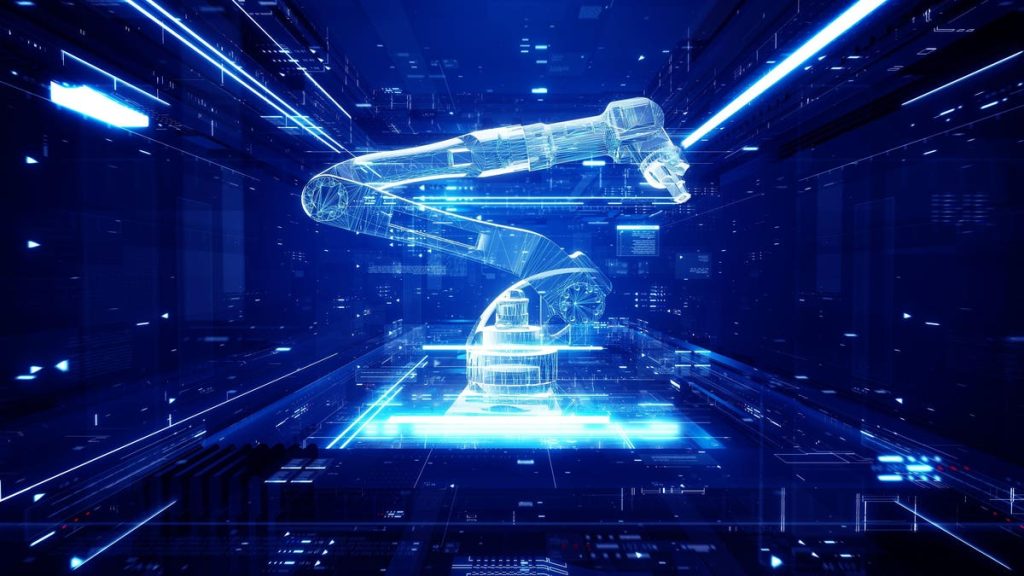Head of Operations at Modzy, driving growth, forging partnerships and helping customers with adoption and use of emerging technology.
Unlike industrial revolutions of the past that centered on the physical world, the digital element introduced in the Fourth Industrial Revolution is giving rise to new innovations and smart solutions across the entire manufacturing sector. Digitization is being powered by the latest advancements in networking connectivity; computing; the Internet of Things and sensor technologies; automation and robotics; and artificial intelligence and machine learning (AI/ML)
For manufacturers, Industry 4.0 creates endless possibilities that range from improving insight and visibility into supply chain operations, reducing hazardous conditions and improving worker safety to performing predictive maintenance for reduced equipment downtime.
To make this vision a reality, manufacturers must make sense of all the various sensors, actuators and devices and decide where to perform the analytics that inform the applications, dashboards and alerting solutions that operators use. The main barriers to Industry 4.0 today aren’t use case related but rather focused on how to ensure interoperability between all the physical and digital capabilities in the most efficient and cost-effective way.
Present-Day Considerations For Achieving Interoperability
Manufacturers sit atop vast troves of data generated from various sensors, systems and assets. But in its raw form, this data can’t provide value if it can’t be quickly analyzed. Analyzing data at this scale requires the power of artificial intelligence and machine learning closely connected to the data source.
Gartner’s Top 10 Strategic Technology Trends for 2019 predicts that through 2028, there will be “a steady increase in the embedding of sensor, storage, compute and advanced AI capabilities in edge devices.”
This increase has the potential to create an industry with thousands of “smart” edge device types—some big, some really tiny and some with larger power requirements than others. When combined with the hundreds, and potentially thousands, of AI/ML models needed to run on these devices, you can see how this can quickly turn into a management nightmare.
Many organizations have defaulted to purchasing proprietary vertical “solutions” that solve a discrete problem for a specific edge application, like visual quality inspection or predictive maintenance monitoring. Although this approach might address a near-term need, it only adds to the mounting challenges. Proprietary systems or point solutions don’t always integrate nicely into existing workflows or technical stacks and can ultimately lead to adoption barriers and friction across the user community.
On top of that, many of today’s analytically-oriented solutions also require data from sensors or other sources to be sent to a central data center or cloud computing environment for analytics and machine learning to be performed. This design pattern becomes extremely costly due to data transmission volumes and increased latency in decision making and can also introduce new security vulnerabilities.
To sum up, today, many manufacturers are relying on inefficient and unscalable solutions and approaches for integrating AI/ML capabilities across factories and plants, which is only contributing to a mess of machines, tools and systems with poor interoperability and sometimes competing technologies.
Building Interoperable AI/ML-Powered Systems
So, what’s the key to building interoperability and enabling Industry 4.0? The first step is to simplify the process by using assets that may already exist and identifying the most efficient, horizontal and scalable approach for the outcome you’re looking to achieve.
Currently, there are billions of installed assets with some form of embedded computing, collecting data rich with insights. Ideally, the data should be analyzed in real time on or near the device, minimizing data transfer to avoid networking and security issues and costs, and integrated with existing operational systems for minimal disruption and increased value.
The next question is, how can you efficiently integrate AI/ML across all of these assets in a way that enables interoperability? Gartner forecasts that many of the aforementioned installed assets will be retrofitted with AI code; additionally, many millions more assets will be manufactured with embedded technologies to create a computing environment for AI-enabled software.
In line with Gartner’s predictions, a more efficient approach would be to bring AI/ML models as close to the users or devices that need them for accelerated analysis and processing, then integrate those AI/ML-generated predictions into your custom or COTS applications and dashboard systems. Using commercial solutions that manage and monitor the AI/ML models deployed to edge devices can bring order to the potential chaos created.
In contrast to the approach of selecting vertical, proprietary systems, deploying AI/ML power to all your devices, sensors and edge assets through a central platform will not only accelerate the development process for building AI/ML-powered solutions. It will also bridge current architecture gaps to build interoperability between systems. This interoperability is what forms the connection points between physical and digital insights to enable Industry 4.0.
Conclusion
To close the gap between the technologies used today and those of Industry 4.0, manufacturers must consider new approaches to interoperability that allow for AI/ML-enabled insights at scale. Rather than considering each asset type as a new puzzle to solve, think about each as a piece of the puzzle that can be solved all at once.
By adopting an integration-first approach that centralizes all your AI/ML-related assets, manufacturers can extract AI/ML-generated insights from existing assets while maintaining the flexibility to evolve in the future. More importantly, this approach to delivering AI/ML-powered insights across manufacturing facilities creates the interoperability needed to enable data-driven solutions that power Industry 4.0 outcomes.
Forbes Technology Council is an invitation-only community for world-class CIOs, CTOs and technology executives. Do I qualify?
Read the full article here










